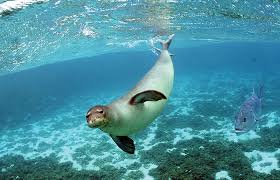By: Jessica Sun
For recent research, Mr. Angelakis called many sea lions to help him including his assistants: Daphne, Iris, Phoebe, and Pasitha. All of them carried underwater video cameras and went to different parts of the ocean floor in Australia’s southern coast to show scientists.
Scientists usually map seabeds by using complex tools but they are super expensive. Instead, Mr. Angelaki’s and his colleagues decided to try another way to map the remote, aquatic ecosystems around Kangaroo Island and Olive Island in Australia. They attached video cameras to the area’s sea lions, which routinely dive 300 feet beneath the surface while hunting.
“For most of the ocean, we don’t know what the bottom looks like,” said Nathan Angelakis, a Ph.D. student at the University of Adelaide and at Aquatic Sciences.
When scientists checked the videos, they saw seaweed, different rocks covered in coral, and even a video of a mother and baby Australian sea lion. The mother was teaching her child how to hunt.
Daphne, Iris, Phobe, and Pasitha’s footage, released in Frontiers in Marine Science, aims to aid scientists in understanding sea lion habitat use and in developing better conservation strategies for endangered Australian sea lions
With approval, Mr. Angelaki’s team sedated eight wild sea lions, attached cameras and trackers to them, and then let them return to the wild. After a few days, they removed the devices, and the sea lions naturally shed the synthetic patches.
“You get those moments which are really exciting,” Mr. Angelakis said, such as “when the sea lion captures a really big fish or a small shark or it’s wrangling an octopus.”











